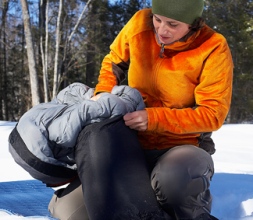 Camping in the great outdoors includes sharing your chosen space with creatures that were there long before you ever decided to pitch your tent.
Camping in the great outdoors includes sharing your chosen space with creatures that were there long before you ever decided to pitch your tent.
Spiders and snakes are a fact of camping that you should embrace and get used to.
Once you know your camping destination you will be able to easily find out what different species are located in that region.
There are even web sites, which provide photographs and descriptions of all the different poisonous creatures you are likely to come across.
In most cases by using common sense and taking basic precautions, you will be perfectly safe. Snakes actually have certain advantages as they can keep down the rodent population and reduce insect infestations.
Certain areas of you camp will attract both spiders and snakes so it helps if you know their behavior patterns.
Check sleeping bags before retiring for the night and watch out when collecting logs for the fire. If an object has been left outside for a while be cautious when you go to use it.
If someone does receive a bite from a spider then cool the area and seek medical attention, pain levels will show how serious the problem will be. Snakes have similar habits except they also like long grass so remember to wear sturdy boots in and around the camp.
A snake bite of any kind will need to get attention from a doctor; even if completely harmless, the breaking of the skin could result in infection. Never assume that the person attacked will just simply recover.









